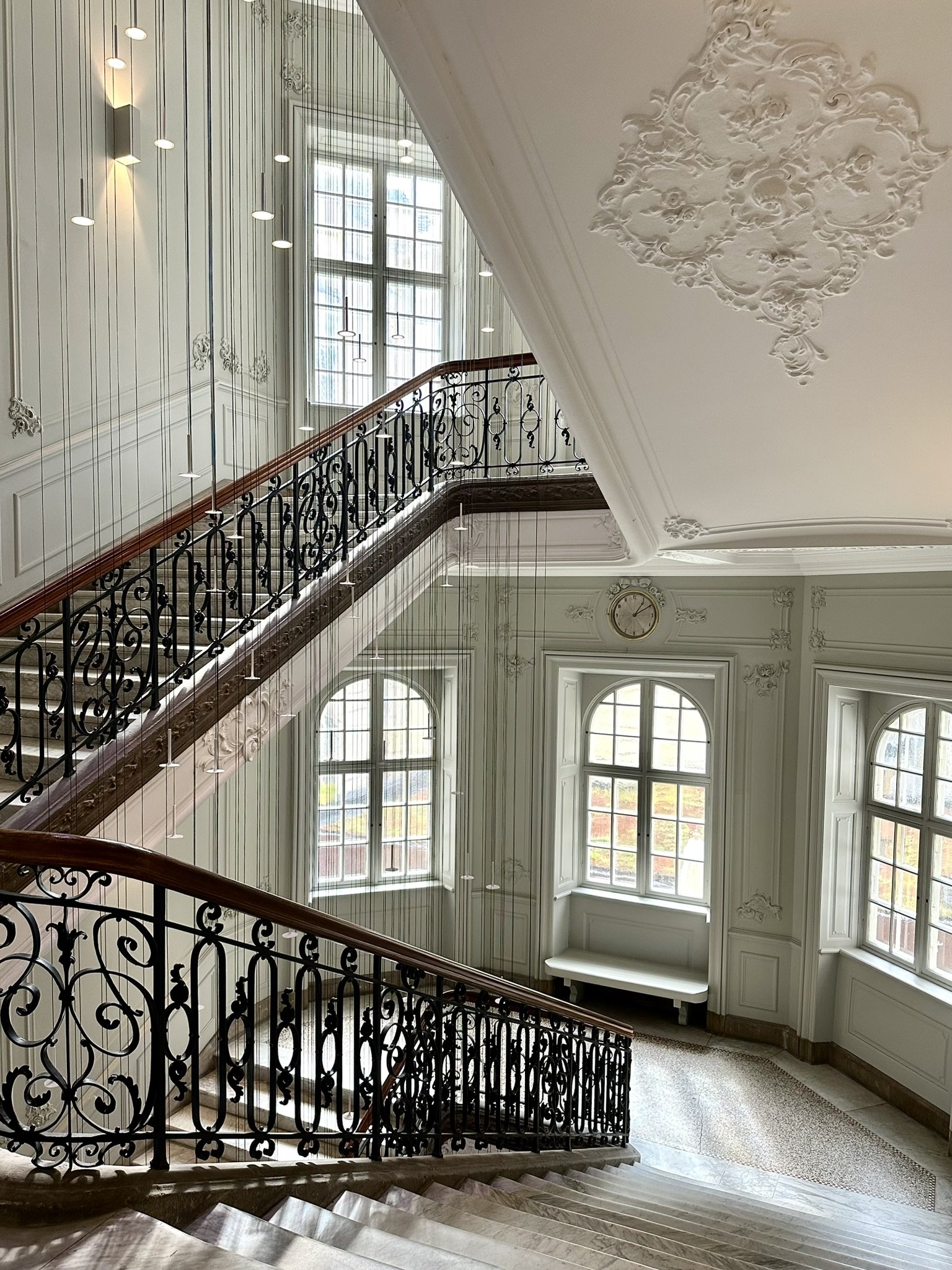Travel - Copenhagen
For my second cruise vacation, we departed from Copenhagen in late June. We only had a half day to explore the city before boarding the ship. One day I’d like to return for a longer stay in this city of design!
Still, for just a short time in the city, there was much to see on our ride to the hotel from the airport and our short evening and morning walks.
For a future multi-day trip, I would check all the museums that I missed including the Danish Architecture Center (DAC). In addition to a stop at DAC, I would check out some of the many prominent architectural projects listed in their app or in their guidebook.
Kaktus Towers Bjarke Ingels Group,2024
On our taxi ride to Copenhagen central, I managed to capture one of the Kaktus Towers as we passed by.
The two towers are connected by a floating public park that slopes towards the ground, adding an aesthetic element to the city scape. The skewed floor slabs of the towers provide a unique architectural form. Additionally, the 495 apartments are designed around a central core.
The Crystal Schmidt Hammer Lassen Architects, 2010
Another drive-by capture on the way to our hotel, The Crystal caught my eye for obvious reasons.
Per Wikipedia: The building takes its name from its light, crystalline form which rests on only a single point and a single line, allowing for unhindered views as well as passage underneath the building.
A Couple of Harbor Sights
Copenhagen Opera House by Henning Larsen, 2005
Copenhagen Opera House by Henning Larsen, 2005
The Opera is located in central Copenhagen at the shore of the Inner Harbour, and just opposite the main palace Amalienborg, residence of the Danish royal family. The opera house is built in alignment with Amalienborg and Frederik’s Church ( Frederiks Kirke), popularly known as the Marble Church (Marmorkirken) so that if one stands in the main entrance of the Opera, one can see the Marble Church over the water along the road through Amalienborg.
Pyramid-shaped Apartments
These pyramid-shaped apartments across the harbour looked lovely with sunlight hitting them just right.
SAS Royal Hotel (now Radisson Collection Royal Hotel) Architect: Arne Jacobsen, 1960
There were two Radisson Hotels close to where we stayed and I’m glad that I double-checked the one that I wanted to walk to - the one designed by Arne Jacobson. I really wanted to tour the infamous room 606 with the original decor from the when the hotel first opened its doors. Though the staff had time to take me up to tour, I forgot my credit card/currency and did not have the means to pay the nominal fee now charged. So, this is on the list for my next visit.
From arnejacobson.com:
The building, which was Copenhagen’s first skyscraper, was designed as a hotel and airport terminal for the airline SAS. When it opened in 1960, it was seen as the symbol of a new era of prosperity, travel and international outlook.
The skyscraper with the distinctive window ribbons floats above a low, two-storey volume with a dark green exterior.
When the hotel opened, the lower volume contained the airport terminal and the hotel foyer, a restaurant and a conservatory. In the airport terminal, which opened as early as 1959, airline passengers could check in and wait for their flight in a stylish, modern setting until the SAS shuttle bus arrived to deliver them directly to their plane.
The soaring building’s 22 storeys contain 275 hotel rooms and, on the top floor, the Panorama Lounge.
The hotel interior was meticulously designed by Arne Jacobsen, and to this day, the furnishings he created for the hotel are key references in furniture design.
Nobis Hotel
We stayed at the very centrally located Nobis Hotel which was housed in a historic landmark building erected in 1903. Originally designed by architect Martin Borch, Royal Surveyor in Copenhagen from 1903-1923, it is one of the first concrete building structures in the Danish capital. For many years, it housed the Royal Danish Academy of Music.
The contemporary interior is designed by the Swedish architect Gert Wingårdh. I took photos in the lounge and stairway.
















